Особенности подбора контактов для разъемов TE Connectivity (TYCO)
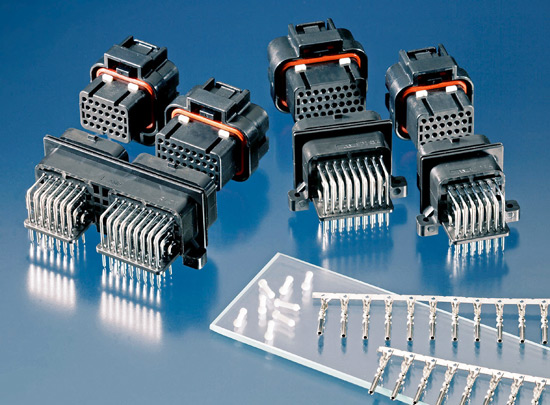
Международная компания TE Connectivity, до 2011 г. имевшая название TYCO Electronics, уже более 50 лет присутствует на рынке электронных компонентов. В настоящее время компания является безусловным лидером в сфере производства и разработки систем коммутационно-соединительного оборудования.
Однако, несмотря на столь долгий срок в использовании соединителей производства TE Connectivity, у многих пользователей до сих пор возникают вопросы по разъемам данного бренда. И основным вопросом, как правило, является вопрос по комплектованию разъемов контактами. Контакты поставляются отдельно от разъемов. И дело здесь вовсе не в том, чтобы запутать потребителя, или заработать «сверхприбыль», выпуская довольно обширный перечень контактов, применимых к данному разъему. Основная проблема при подборе контактов связана с тем, что TE Connectivity использует тяжело воспринимаемую систему обозначений для своих изделий. По наименованию разъема не удается понять, какие же контакты предназначены для него. Давайте попробуем разобраться со всем этим по порядку на примере разъемов популярной серии Superseal 1.5. И обойтись здесь без помощи справочных материалов никак не получится.
Порядок работы по подбору контактов начинается с того, чтобы определить, контакты какого типа (штыри или гнезда) нам необходимы. Существуют серии разъемов, для которых тип контакта определяется типом самого соединителя (вилка-розетка). А именно, для разъема типа «розетка» используются контакты типа «гнездо». Для разъемов типа «вилка» - соответственно, тип контакта «штырь». Однако существуют и такие типы разъемов, в которые можно вставлять как контакты типа «гнездо», так и «штырь». Зачем это надо? Для того, чтобы создавать свою собственную систему «ключей». Так, при использовании всего одного типа разъема с тремя контактами, варьируя типы контактов, возможно создать целых семь вариантов комбинаций контактов. Результат – исключение ошибочного подключения разъемов между собой.
Для примера, нам нужны контакты для разъема 282105-1, Корпус разъема Superseal 1.5, вилка, 3PIN.
Заходим в каталог данной серии разъемов, выбираем контакты типа «штырь».
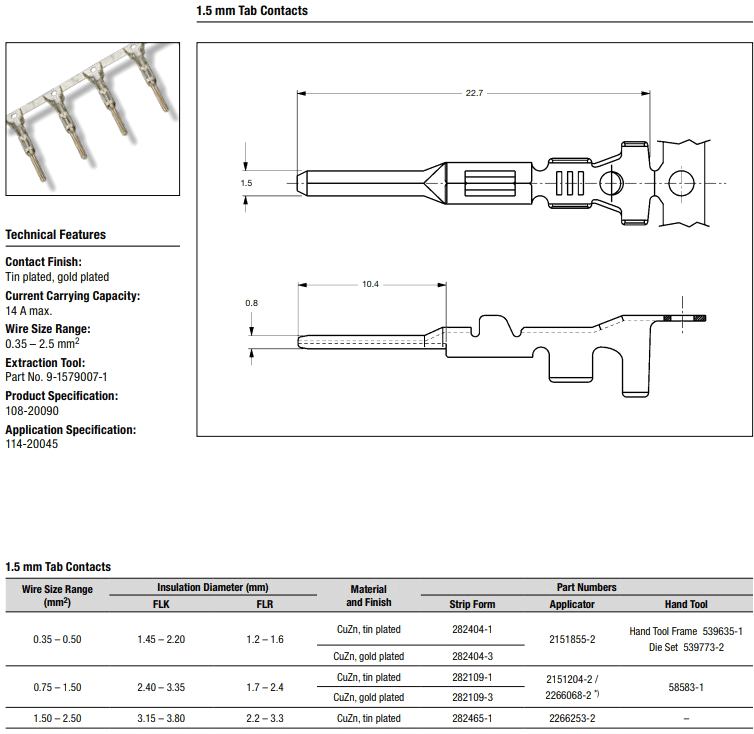
Далее, основными параметрами являются сечение используемого провода и диаметр изоляции.
Например, мы используем провод сечением 0.5мм².
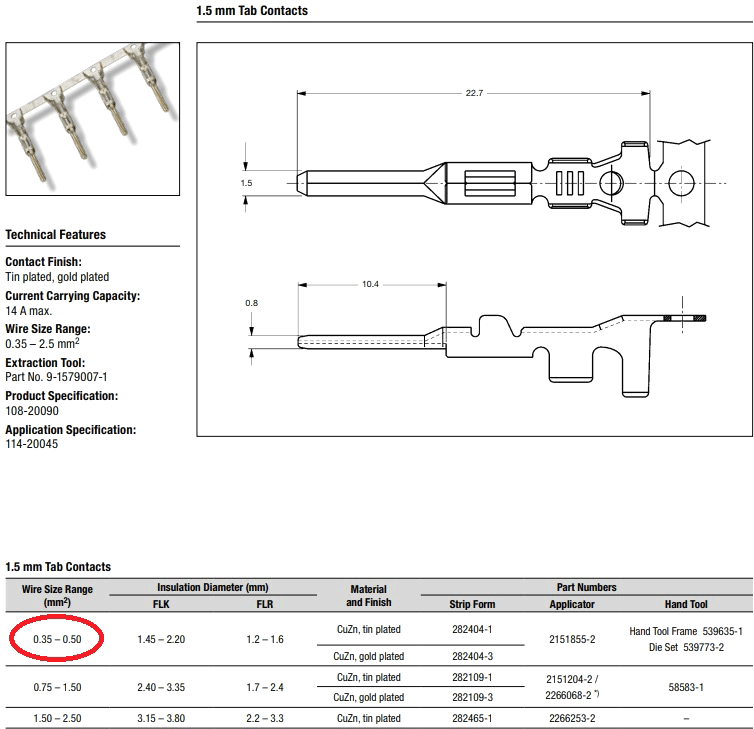
Находим в таблице строку с данным значением, и видим, что нашим параметрам удовлетворяет два контакта - 282404-1 и 282404-3.
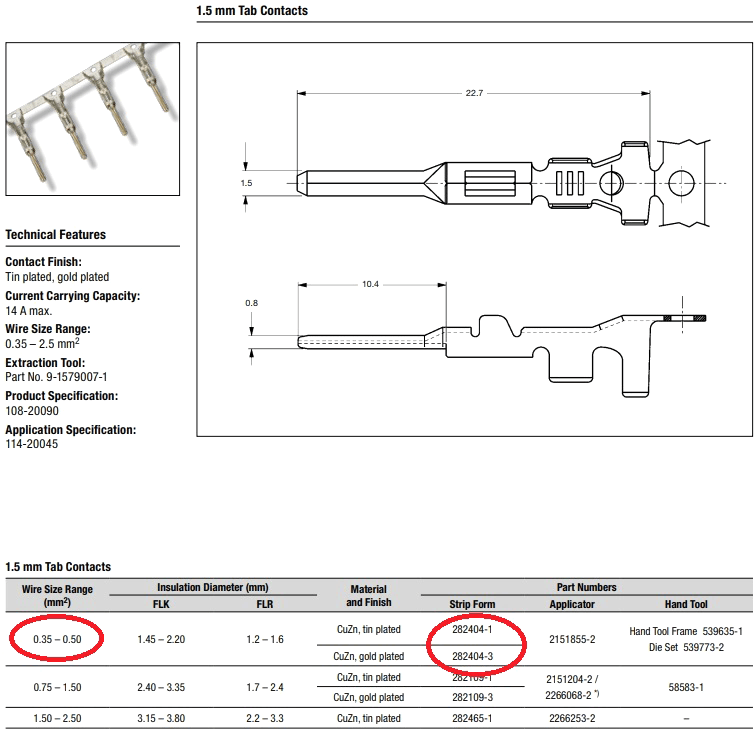
По этой же таблице можно увидеть, что отличаются они друг от друга только покрытием контактов.
У 282404-1 покрытие «олово», у 282404-3 – золото.
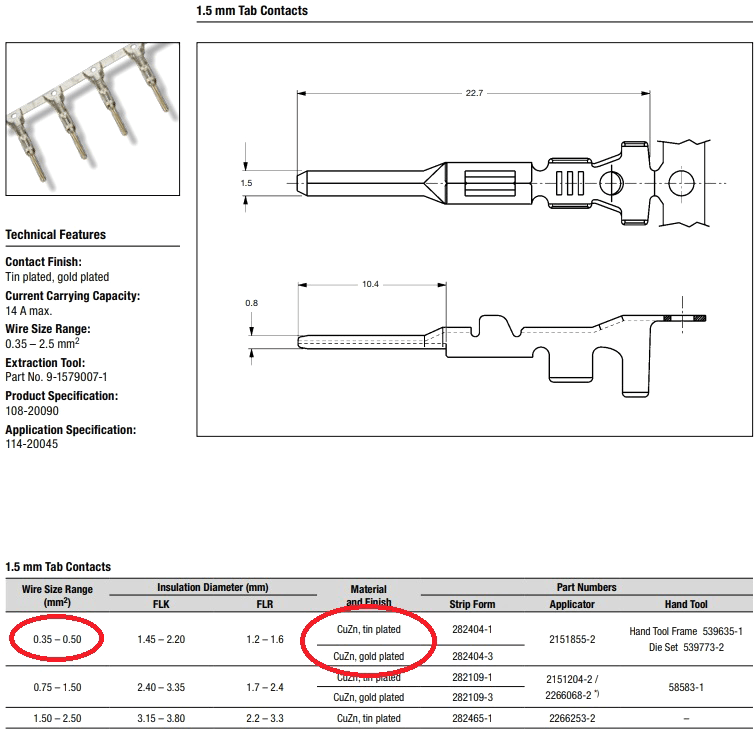
Подобным же способом можно подобрать контакты к любым разъемам TE Connectivity. Данный пример является простым. Так, например, как видно на следующем изображении, для разъемов серии AMPSEAL 16 количество используемых контактов составляет 12 для контактов типа «штырь», и столько же для контактов типа «гнездо».
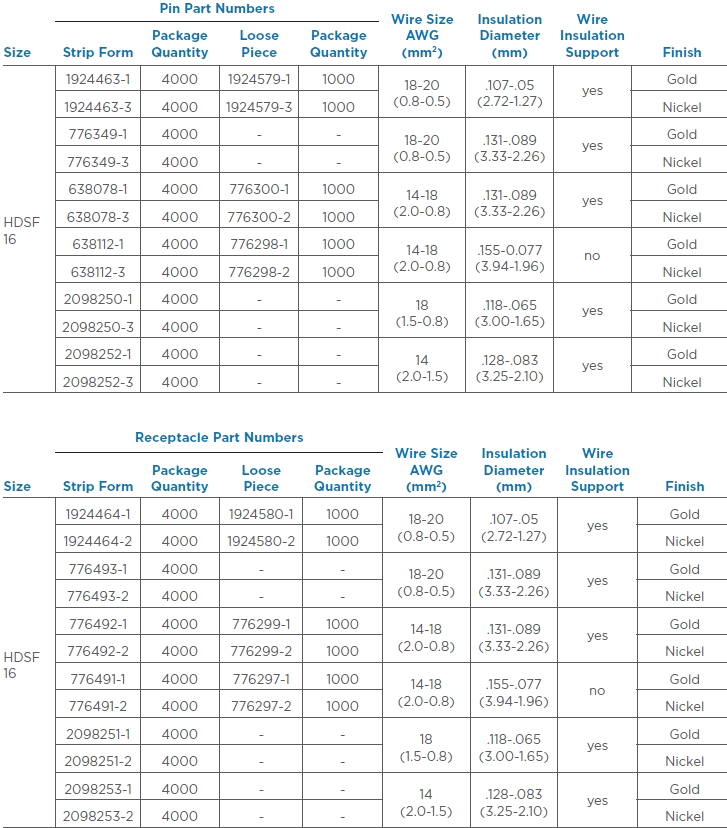
Некоторые параметры могут иметь решающее значение при выборе контактов, например, поставляются ли данные контакты в ленте, или россыпью. Для кого-то может иметь значение покрытие контактов. Кто-то может этим пренебречь…
Приходится признать, что для правильного выбора контактов для разъемов TEConnectivity не существует иного способа, как работа с каталогом производителя. Конечно, многие поставщики электронных компонентов сами создают перекрестные ссылки на разъемы и самые востребованные контакты. Либо указывают в наименовании контактов, для какого типа разъемов эти контакты предназначены. Но стоит задать более строгие параметры подбора, как неминуемо приходится возвращаться к каталогам производителя.
